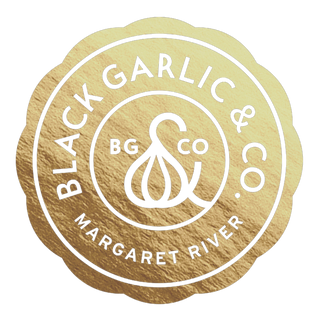With Black Garlic there are certain myths that we come across with our customers on a regular basis. The aim of this blog is to debunk some of the Myths of Black Garlic and address the common misconceptions surrounding black garlic.
1.Myth one – It is fermented but it is not!
Fermentation is a chemical breakdown of a substance by bacteria, yeasts, or microorganisms, and it is a process often used in the production of foods like sauerkraut and beer.
The Maillard reaction is the chemical reaction that occurs in the presence of heat between amino acids and reducing sugars that results in food browning thereby producing fresh aromas and flavours. Black garlic is produced when garlic is aged in an environment of controlled humidity typically 85% humidity and cooked at a temperature of 70 °C for 40 days. No additives or preservatives are used and there is no burning of the garlic, with the dark colour arising from a long-term, low temperature. The cloves turn black and develop a sticky date-like texture.

Figure 1. Garlic and black garlic samples used in an investigation. No 1 was not heated, whereas 2 was heated for 7 days, 3 for 14 days, 4 for 21 days and 5 for 28 days. The diameter of the circle is 5.0 cm.
The above diagram is from MDPI Article Molecules 2020.
The Maillard reaction is an overly complex process, and I could do a blog just on this topic alone!
2.Myth two - Black Garlic vs. Roasted Garlic
Black Garlic is made by letting garlic bulbs rest at low heat for weeks at a time. Whereas roasted garlic is achieved by baking garlic at low heat until its very soft about an hour.


Black Garlic Versus Roasted Garlic
Roasted garlic cloves are browned with a sweet, caramelised flavour. They are tender to the point of being mushy and are easily stirred into salad dressings and mashed potatoes. Roasted garlic cloves are browned with a sweet, caramelised flavour. They are tender to the point of being mushy and are easily stirred into salad dressings and mashed potatoes.
Here is a summary of the key differences between Black Garlic & Roasted Garlic.
|
Feature |
Black Garlic |
Roasted Garlic |
|
Process |
Low temperature aging |
High temperature baking |
|
Flavour |
Sweet, complex, with fruity notes |
Sweet, caramelised |
|
Texture |
Soft, chewy |
Soft, creamy |
|
Intensity |
Milder |
Milder than raw garlic, but stronger than black garlic |
3.Myth #3: It is a different plant altogether. People often ask if you can grow black garlic but nope, black garlic is simply regular garlic that has undergone an aging process called the Maillard reaction.
4.Myth #4: It is loaded with artificial additives. The aging process is natural and does not require any additives or preservatives.
5.Myth #5: It is too expensive for everyday use. While it is true that black garlic is pricier than raw garlic, a little goes a long way due to its concentrated flavour. Once black garlic is used to make many different pantry staples such as our range of Black Garlic & Co products it is available to use in cooking and entertaining.

